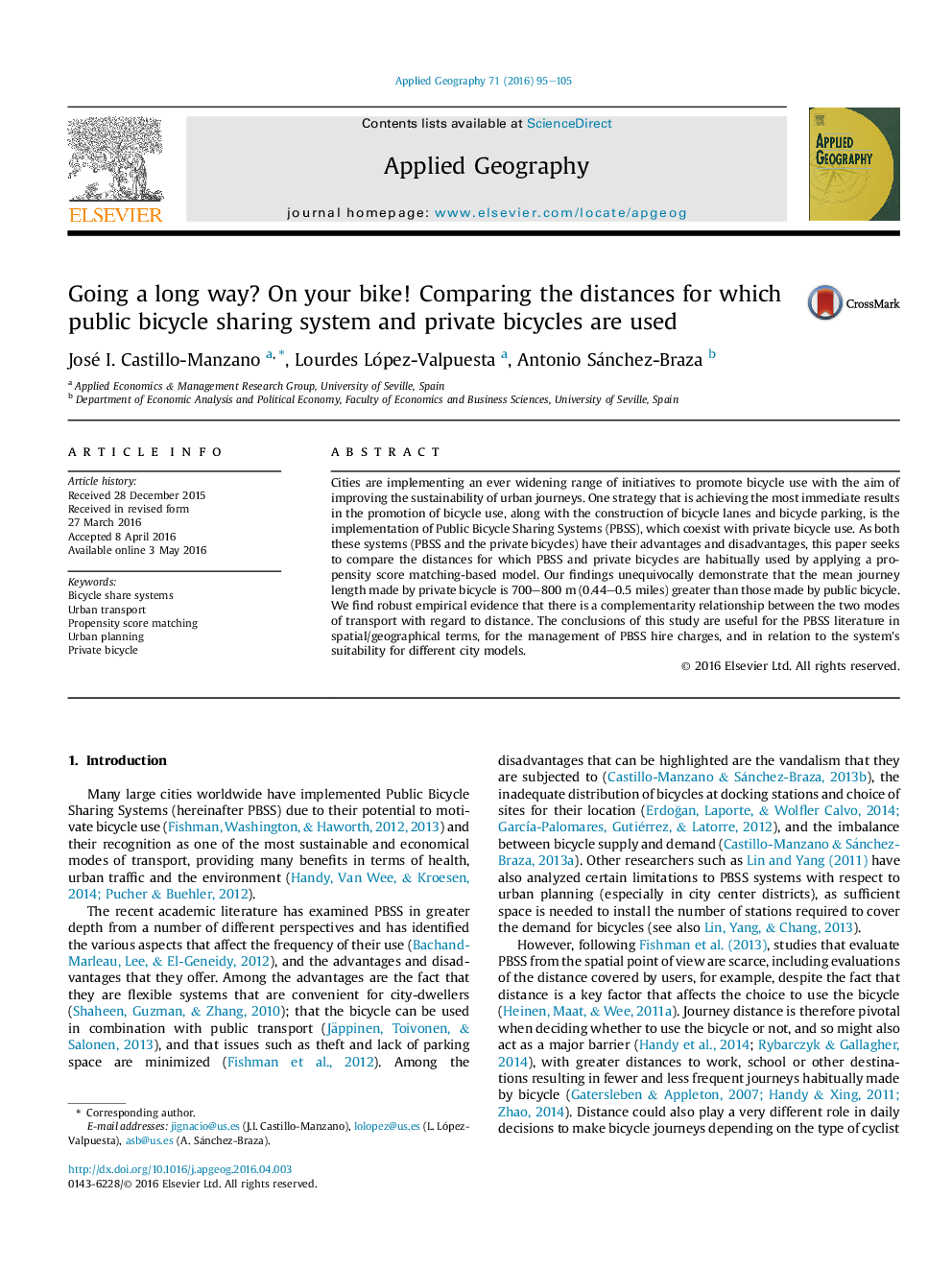| Article ID | Journal | Published Year | Pages | File Type |
|---|---|---|---|---|
| 83153 | Applied Geography | 2016 | 11 Pages |
•We evaluate the establishment of a PBS in terms of meters covered using the bicycle.•A propensity score matching model is applied to data obtained by a survey campaign.•Results show that the distance covered is considerably lower for journeys made by PBS.•The average length of journey made by private bicycle is around 750 m greater.•PBSs are a more competitive option in small and medium sized cities.
Cities are implementing an ever widening range of initiatives to promote bicycle use with the aim of improving the sustainability of urban journeys. One strategy that is achieving the most immediate results in the promotion of bicycle use, along with the construction of bicycle lanes and bicycle parking, is the implementation of Public Bicycle Sharing Systems (PBSS), which coexist with private bicycle use. As both these systems (PBSS and the private bicycles) have their advantages and disadvantages, this paper seeks to compare the distances for which PBSS and private bicycles are habitually used by applying a propensity score matching-based model. Our findings unequivocally demonstrate that the mean journey length made by private bicycle is 700–800 m (0.44–0.5 miles) greater than those made by public bicycle. We find robust empirical evidence that there is a complementarity relationship between the two modes of transport with regard to distance. The conclusions of this study are useful for the PBSS literature in spatial/geographical terms, for the management of PBSS hire charges, and in relation to the system's suitability for different city models.
